Potentially Dangerous Marine Life You Could Encounter When Diving in Hurghada
Hurghada is a world-renowned diving destination known for its crystal-clear waters, vibrant reefs, and marine diversity. While most encounters with marine life are safe and awe-inspiring, it’s essential for divers to be aware of a few species that require extra respect and caution. These animals aren’t aggressive by nature, but knowing how to interact—or not interact—with them is key to a safe and enjoyable dive experience.
At scubadore hurghada, we believe that education and responsible diving practices go hand in hand. That’s why we emphasize diver awareness of local species and good buoyancy control during all our dives. Here are some of the potentially hazardous marine creatures you might encounter while diving in Hurghada—and how to stay safe while appreciating them.
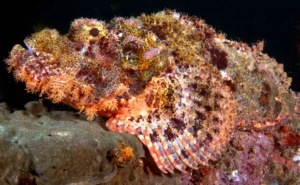 Stonefish and Scorpionfish
Stonefish and Scorpionfish
Stonefish and scorpionfish are among the most venomous fish in the sea and are often mistaken for rocks or coral due to their exceptional camouflage. These ambush predators tend to remain motionless on the seafloor or tucked into reef crevices, making them easy to overlook. What makes them dangerous are the venomous spines on their dorsal fins, which can cause extreme pain and serious injury if stepped on or touched.
To avoid an unwanted encounter, always maintain proper buoyancy and avoid placing your hands or knees on the seabed. Good situational awareness is crucial—especially when diving in areas with rocky bottoms or ledges. While they pose little risk when undisturbed, stonefish and scorpionfish should be appreciated from a respectful distance. At scubadore hurghada, our guides will point out these fascinating but elusive fish so you can observe them safely.
Lionfish
Lionfish are one of the most visually stunning species in the Red Sea, with long, elegant fins and vibrant stripes. However, they are also equipped with venomous spines that can deliver painful stings if touched. While not aggressive, lionfish will raise their spines as a defense mechanism if they feel threatened, making it important for divers to keep their distance.
You’re most likely to spot lionfish under ledges, near coral heads, or hovering in calm areas. Night dives may reveal even more lionfish activity as they become more active after dark. Divers should resist the urge to get too close for photos, especially when using lights that may startle them. Respectful observation and keeping your hands to yourself go a long way in staying safe around these beautiful fish.
 Moray Eels
Moray Eels
Moray eels often provoke curiosity with their snake-like appearance and protruding heads from reef crevices. While generally not dangerous unless provoked, they can bite if they feel threatened—especially if divers reach into their hiding places or attempt to feed them. Their sharp teeth and powerful jaws can cause serious lacerations.
It’s best to admire morays from a distance and avoid sticking hands into any holes or gaps in the reef. At scubadore hurghada, we frequently encounter moray eels on many of our guided dives, and our instructors will ensure that your interactions are safe and respectful. Learning to read body language—such as gaping mouths or defensive postures—can also help you avoid any missteps with these shy but powerful animals.
Stingrays
Graceful and elegant, stingrays are often found resting on sandy bottoms or gliding effortlessly across the seabed. They are not aggressive by nature but can deliver a painful sting with the venomous barb on their tail if stepped on or startled. Most incidents occur when divers unknowingly walk or swim too close.
To avoid accidents, always perform the “stingray shuffle” when walking in shallow areas—sliding your feet along the sand rather than stepping. Underwater, maintain a respectful distance and avoid hovering directly above a resting ray. Sightings of blue-spotted stingrays are common around Hurghada, and they’re a favorite for underwater photographers. Just remember: enjoy the view, but give them space.
 Fire Coral
Fire Coral
Fire coral might look like harmless coral, but it’s actually a type of hydrozoan that can deliver a painful sting through tiny, hair-like tentacles. The result is a burning sensation and possible skin irritation, hence the name. Fire coral can be found throughout the Red Sea, often growing in small clumps or encrusting rock formations.
Because it blends in so well with its surroundings, divers sometimes brush against fire coral accidentally. This is where buoyancy control becomes essential. Staying off the reef, avoiding contact with all corals, and being spatially aware will protect both you and the reef. If you experience a sting, rinse with vinegar and inform your dive guide.
Sea Urchins
Sea urchins are commonly found in rocky areas and among reef crevices. While they aren’t aggressive, their sharp spines can puncture skin if accidentally touched or stepped on. Some species also have venomous spines, which can cause swelling, pain, and even infection if not treated properly.
To avoid injury, avoid touching the reef and never walk barefoot in shallow rocky areas. Keep an eye on where you place your hands when steadying yourself underwater. If you do get stung, don’t try to remove the spines yourself; inform your dive guide and seek proper first aid. Fortunately, sea urchin injuries are rare with proper awareness and training.
 Triggerfish
Triggerfish
Titan triggerfish are colorful and fascinating to watch, but during nesting season, they can become fiercely territorial. If a diver gets too close to a nest—typically located on sandy bottoms—the triggerfish may charge in defense. These attacks can be startling and may include bites or ramming with their strong jaws.
The key to avoiding trouble is knowing how to identify nesting behavior and to steer clear. If a triggerfish approaches, swim horizontally away (not upward) to avoid the cone-shaped territory above the nest. Our team at scubadore hurghada will brief you before every dive, especially at sites known for triggerfish activity, so you know what to expect and how to react.
Cone Snails
Cone snails may look small and beautiful, often appearing like ornamental shells on the seabed, but a few species are equipped with a venomous harpoon-like tooth used for hunting prey. This venom can be extremely potent and, in rare cases, dangerous to humans.
The good news is that cone snails only pose a threat when handled. That’s why the best approach is to enjoy their beauty without touching. At scubadore hurghada, we emphasize a “look but don’t touch” approach to all marine life—not only for your safety but for the preservation of the underwater ecosystem.
Dive Smart, Dive Safe
Encountering these species doesn’t need to be a cause for concern—just a reason to dive smarter. With a knowledgeable guide, respectful distance, and good buoyancy skills, you can safely enjoy everything the Red Sea has to offer. At scubadore hurghada, our experienced instructors are trained to help divers identify and safely observe all marine life, including the more hazardous species.
Remember, the key to a safe and enjoyable dive is awareness and education. With the right preparation, even potentially dangerous encounters can become fascinating highlights of your underwater journey in Hurghada.

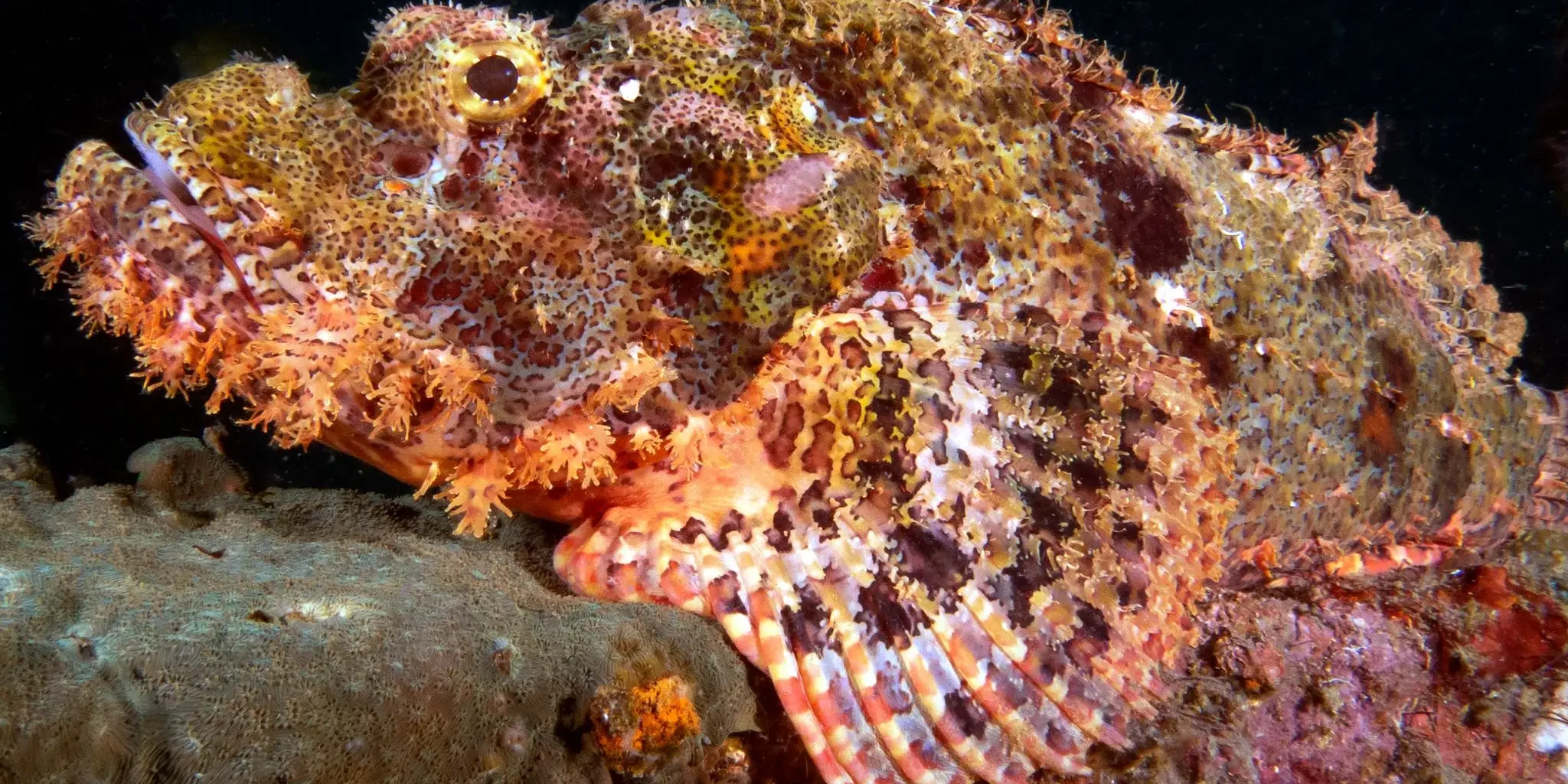
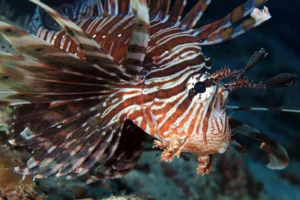
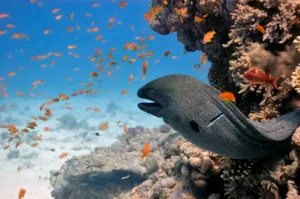 Moray Eels
Moray Eels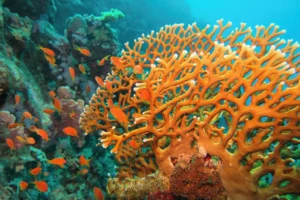 Fire Coral
Fire Coral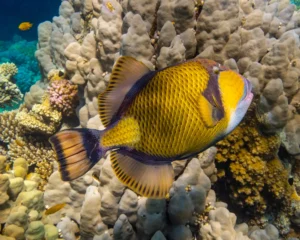 Triggerfish
Triggerfish




